Environment & Nature
Rising seas could flood nests of vulnerable sea turtles – new research
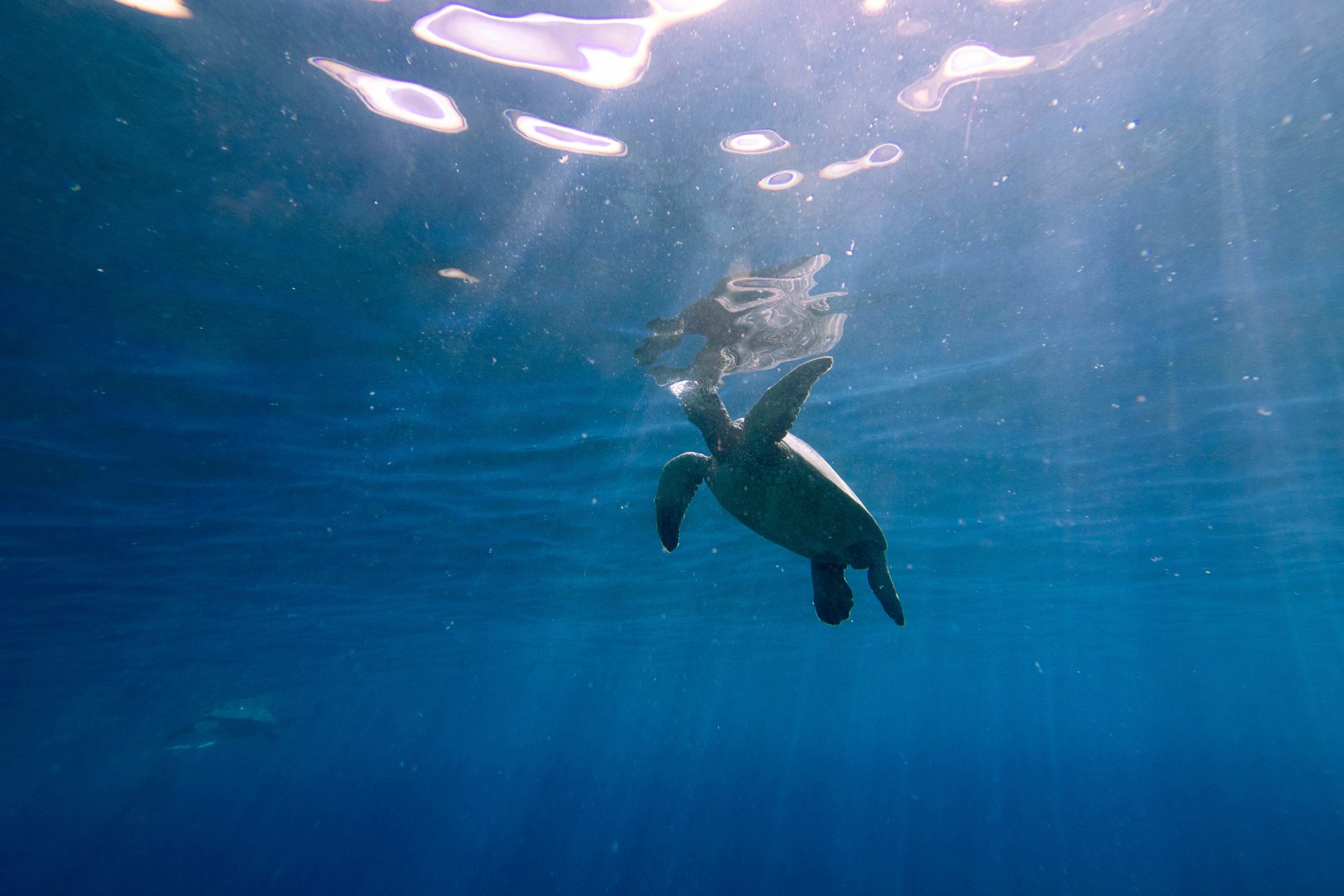
Sea-level rises caused by global warming could flood sea turtle nesting beaches in Australia, several Caribbean islands, Costa Rica and the US. (Pexels Photo)
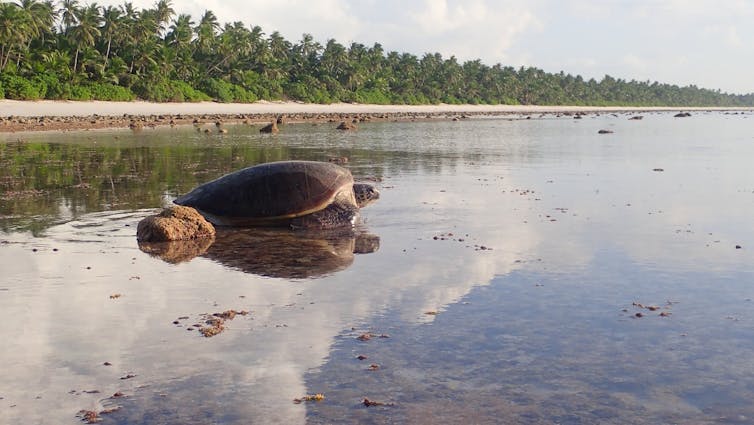
Nicole Esteban, Author provided
Sea-level rises caused by global warming could flood sea turtle nesting beaches in Australia, several Caribbean islands, Costa Rica and the US.
Our findings suggest that flooding could deprive five vulnerable species of valuable nesting sites. Even if climate change this century is not as extreme as some scenarios project, we predict that all nesting habitats at two of the seven areas we studied will be flooded. The nests of leatherback turtles, which are already listed as vulnerable to extinction by the International Union for the Conservation of Nature (IUCN), are most at risk.
All seven species of sea turtles mate close to coastlines in tropical and sub-tropical waters. Gravid (pregnant) females then crawl onto low-lying sandy beaches, dig a shallow nest by scooping out dry sand with their flippers and deposit a clutch of eggs. Sea turtles may return to the same beach to make several nests each season.
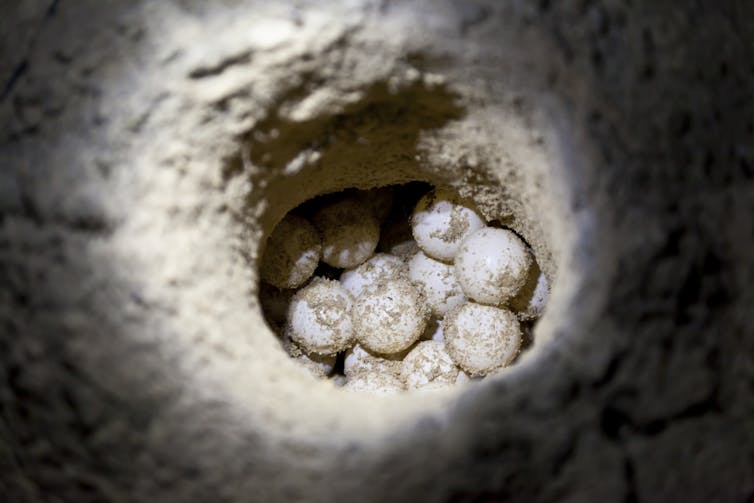
Ymgerman/Shutterstock
Hard-shelled species, like hawksbill or green turtles, crawl across rocky reef flats to reach the beach while leatherback turtles prefer nests in open expanses of beach close to deep waters. Breeding adults will migrate long distances between foraging and breeding habitats and return to the same place to breed across many decades. A green turtle that was tagged at foraging grounds in Kenya in 2003 was observed breeding in the Chagos Archipelago in 2015 and then tracked by satellite transmitter to the same place in Kenya in 2016.
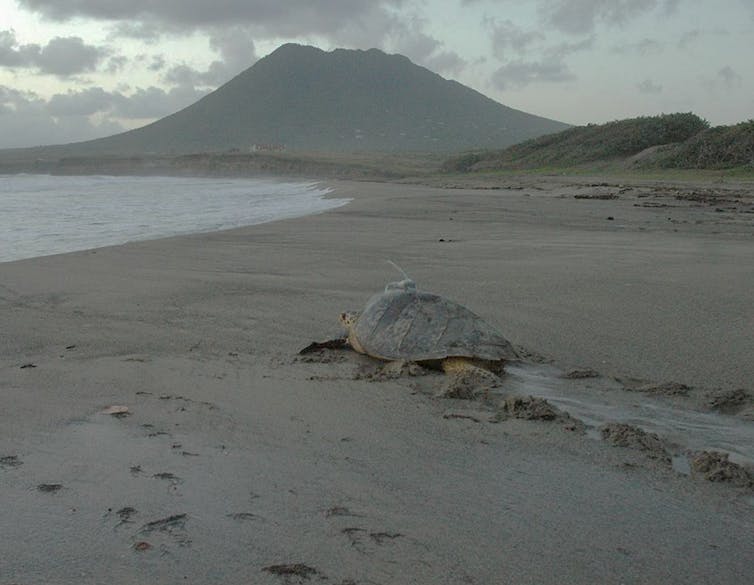
Nicole Esteban, Author provided
Leatherbacks most at risk
We estimated the probability of 2835 sea turtle nests in seven breeding grounds being completely submerged all year round under moderate and high greenhouse gas emission scenarios projected between 2010 and 2100 by the Intergovernmental Panel on Climate Change (IPCC). These included Mondonguillo beach in Costa Rica, the Guanahacabibes peninsula in Cuba, Saona Island in the Dominican Republic, the coast of Ecuador, Raine Island in Australia, St George Island in Florida, US, and Sint Eustatius in the Caribbean. All were used by green, hawksbill, leatherback, loggerhead and olive ridley sea turtles.

Marga L. Rivas, Author provided
As you might expect, breeding grounds on flat beaches were most vulnerable to flooding. Under a moderate emissions scenario, in which global emissions of carbon dioxide and other greenhouse gases peak around 2040, we estimated that all nests on Raine and Saona Islands would be vulnerable to flooding or vanish entirely.
Under the same scenario, we estimated that all nesting sites on St George Island and Mondonguillo beach might also flood. Within studied breeding grounds used by multiple turtle species, we estimated that leatherback turtle nests would be particularly threatened. This is because leatherbacks tend to nest near the high tide line, while hawksbill and green turtles nest higher up, closer to dunes and steep cliffs. In St Eustatius under a moderate emissions scenario, 50% of leatherback, 18% of hawksbill, and 13% of green turtle nest sites may be vulnerable to flooding on average by 2050.
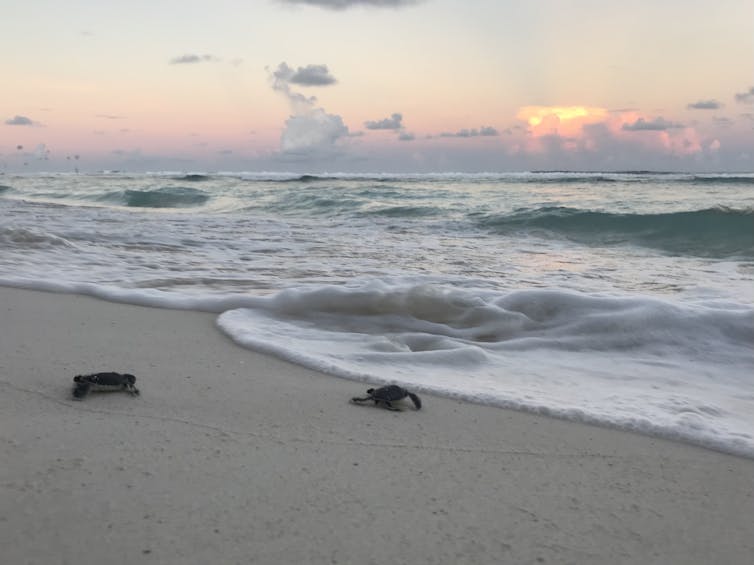
Holly Stokes, Author provided
As female sea turtles return to nest on the same beaches across multiple decades to breed, sea-level rises could lead many to nest on flooded beaches, potentially reducing the number of turtles hatching. The long-term effects of this on sea turtle populations are unclear – further research should investigate adaptations to changes in nesting habitat due to flooding.
In the meantime, conservationists must try to mitigate the consequences of sea-level rise for sea turtles and help make these species more resilient. This could include shifting sand to increase the height of potential nesting sites on beaches and relocate any nests threatened by flooding to safe places under controlled conditions. It will be necessary to carefully assess their temperature to avoid skewing sex ratios, as warmer nests increase the proportion of female hatchlings from each clutch of eggs.

Don’t have time to read about climate change as much as you’d like?
Get a weekly roundup in your inbox instead. Every Wednesday, The Conversation’s environment editor writes Imagine, a short email that goes a little deeper into just one climate issue. Join the 10,000+ readers who’ve subscribed so far.![]()
Nicole Esteban, Associate Professor of Marine Biology, Swansea University and Marga L. Rivas, Postdoctoral Researcher, Biology Department, Marine Research Institute (INMAR), Universidad de Cádiz
This article is republished from The Conversation under a Creative Commons license. Read the original article.





















